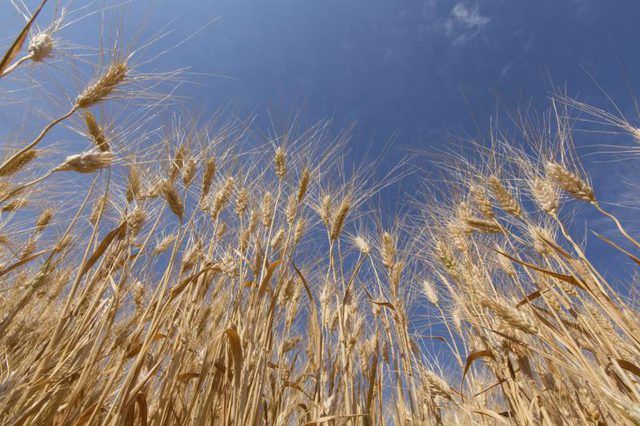Bulbs
Flower Basics
Flower Beds & Specialty Gardens
Flower Garden
Garden Furniture
Garden Gnomes
Garden Seeds
Garden Sheds
Garden Statues
Garden Tools & Supplies
Gardening Basics
Green & Organic
Groundcovers & Vines
Growing Annuals
Growing Basil
Growing Beans
Growing Berries
Growing Blueberries
Growing Cactus
Growing Corn
Growing Cotton
Growing Edibles
Growing Flowers
Growing Garlic
Growing Grapes
Growing Grass
Growing Herbs
Growing Jasmine
Growing Mint
Growing Mushrooms
Orchids
Growing Peanuts
Growing Perennials
Growing Plants
Growing Rosemary
Growing Roses
Growing Strawberries
Growing Sunflowers
Growing Thyme
Growing Tomatoes
Growing Tulips
Growing Vegetables
Herb Basics
Herb Garden
Indoor Growing
Landscaping Basics
Landscaping Patios
Landscaping Plants
Landscaping Shrubs
Landscaping Trees
Landscaping Walks & Pathways
Lawn Basics
Lawn Maintenance
Lawn Mowers
Lawn Ornaments
Lawn Planting
Lawn Tools
Outdoor Growing
Overall Landscape Planning
Pests, Weeds & Problems
Plant Basics
Rock Garden
Rose Garden
Shrubs
Soil
Specialty Gardens
Trees
Vegetable Garden
Yard Maintenance
How to Grow Barley
How to Grow Barley. Maturing in less than three months, barley (Hordeum vulgare) is one of the easiest grains to grow in the home garden and may be planted in fall for an early summer harvest the following year or in mid-spring for a mid to late summer harvest Considered hardy in U.S. Department of Agriculture plant hardiness zones 3 through 11, it...

Maturing in less than three months, barley (Hordeum vulgare) is one of the easiest grains to grow in the home garden and may be planted in fall for an early summer harvest the following year or in mid-spring for a mid to late summer harvest Considered hardy in U.S. Department of Agriculture plant hardiness zones 3 through 11, it can die out over winter if autumn sown in colder zones. Some gardeners grow barley as a cover crop and turn it under while it is still green to loosen and fertilize their soil.
Planning the Barley Patch
The planting of fall barley can begin by mid-September in colder states such as Pennsylvania and may continue until the end of the year in warmer ones such as Arizona. Spring barley usually is planted earlier than most garden crops, in mid-spring, about the same time that peas (Pisum sativum) would be sown. That planting time can vary, according to zone, from early March in California to late May in Alaska. Choose a type of barley intended for the season in which planting takes place as fall barley won't mature properly if planted in spring. Gardeners should opt for hulless cultivars -- which require less processing -- preferably six-row varieties, which mature earlier and are less likely to require irrigation than two-row types.
Preparing the Barley Patch
Choose a sunny, well-drained plot with a pH between 6.0 and 7.0 that will be workable in the season in which you plant. After rooting out any weeds, till a couple of inches of compost into the plot to provide nutrients for the growing grain. If you prefer to be able to water and weed the barley, plant the grains in beds 2 to 4 feet across, with 1 1/2-foot rows between them, rather than in a solid patch.
Planting the Barley Patch
Draw grooves in the soil from north to south with a rake, making grooves about 3/4 inch deep. You will need 1/4 pound of seed to sow every 100 square feet of ground. (A 100-square-foot plot should produce a 5- to 7-pound harvest of barley grains.) Strew the seed over the area, using a casting motion and aiming for about 1 seed for each square inch of ground. Rake the bed from east to west to cover the seed. Some of the grains will still be visible but that isnít a problem.
Producing the Barley Harvest
After watering the bed well, mulch it with 2 inches of straw to help maintain that moisture, suppress weeds and discourage birds from eating the grains. Seeds should begin sprouting within one or two days, with the seedlings resembling blades of grass. Well-adapted to dry conditions, barley usually doesnít require supplemental water unless conditions are extremely dry and grows fast and thickly enough to crowd out most weeds. If you are raising it as a cover crop, turn it under in the spring once the stalks reach 10 inches high. Barley grown for its grains will be ready to harvest when the stalks begin turning a golden color and the grains don't indent when pressed with a fingernail.